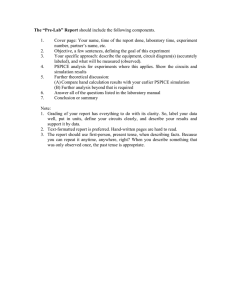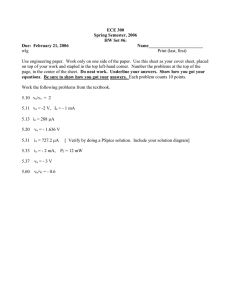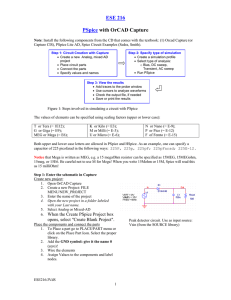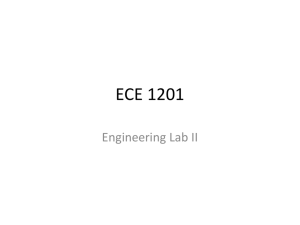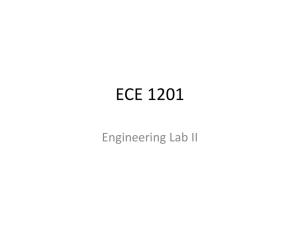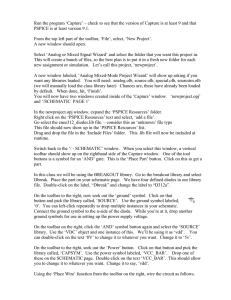PSpice Examples
advertisement
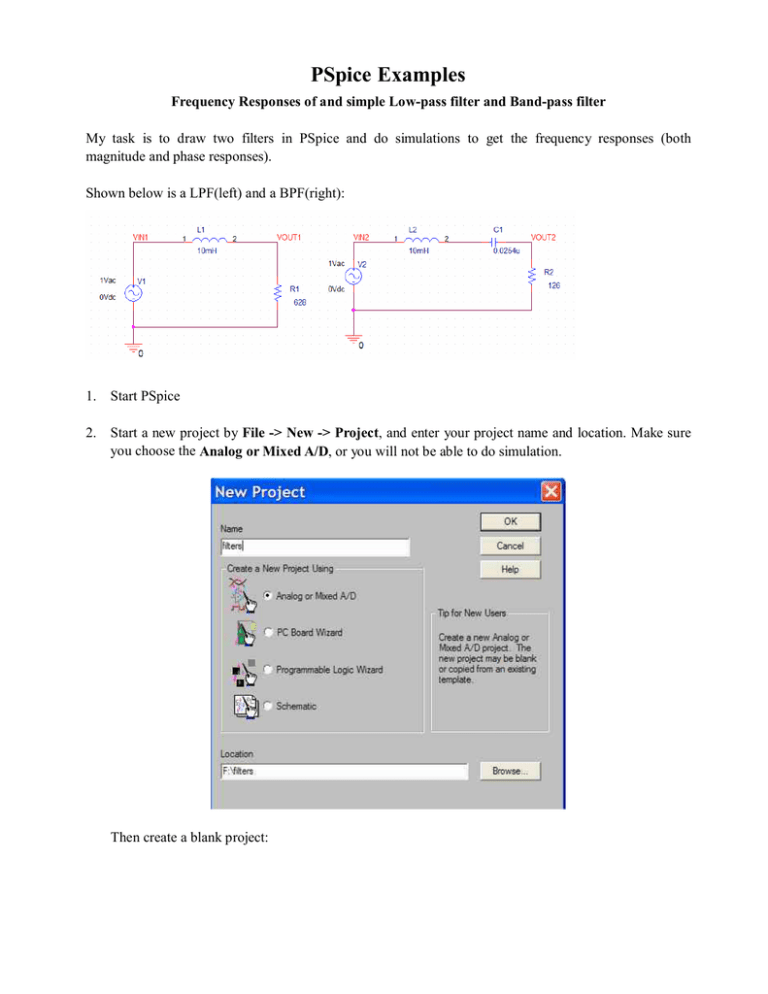
PSpice Examples Frequency Responses of and simple Low-pass filter and Band-pass filter My task is to draw two filters in PSpice and do simulations to get the frequency responses (both magnitude and phase responses). Shown below is a LPF(left) and a BPF(right): 1. Start PSpice 2. Start a new project by File -> New -> Project, and enter your project name and location. Make sure you choose the Analog or Mixed A/D, or you will not be able to do simulation. Then create a blank project: 3. Draw Circuits 1) How to place part: If you want to place a part like resistance or capacitor, you can do as shown below: You can choose your R, C, L from the analog.olb library in the \Library\PSpice folder: 2) To place ground, click Place -> Ground, then add source.olb in \Library\PSpice folder, Choose the “0”ground: Important: Choosing other “ground”s in CAPSYM library may cause errors. 3) To place the voltage source, again Place -> Part and choose VAC in source.olb. 4) Draw wires and change parameters of parts, then I get the schematic below: 4. Save your project and setup a simulation profile 1) Click PSpice -> New Simulation Profile. 2) Click PSpice -> Edit Simulation Profile, Choose AC Sweep/Noise as analysis type. 3) In “General Settings “set the Start frequency as 10(Hz) and End frequency as 1M(Hz), and 10 points per decade (if choosing logarithmic sweep type). 4) Then I can do simulation by click PSpice -> Run. Then the PSpice AD window will pop out. This is the place I get the frequency response traces. Click Trace -> Add trace to get the window below: To get the magnitude response of LPF, type DB(V(L1:2)/V(L1:1)) or more simply DB(V(VOUT1)/V(IN1)) (if you have placed net alias in the schematic) in the trace expression area. This expression means to plot the magnitude of transfer function (20*log(magnitude_out / magnitude_in)) . Press “OK”, then you can get the magnitude response in the main window, as shown below (I have inverted the color). It is a low-pass filter. Similarly, to get the phase response, use the expression: P(V(VOUT1))-P(V(IN1)). P(.) is the function to obtain the phase. P(V(L1:2))-P(V(L1:1)) or 4) In the BPF case, it’ s similar: To get the magnitude response, use expression: DB(V(R2:2)/V(L2:1)) or DB(V(VOUT2)/V(VIN2)). To get the phase response, use expression: P(V(R2:2))-P(V(L2:1)) or P(V(VOUT2))-P(V(IN2)) Appendix

